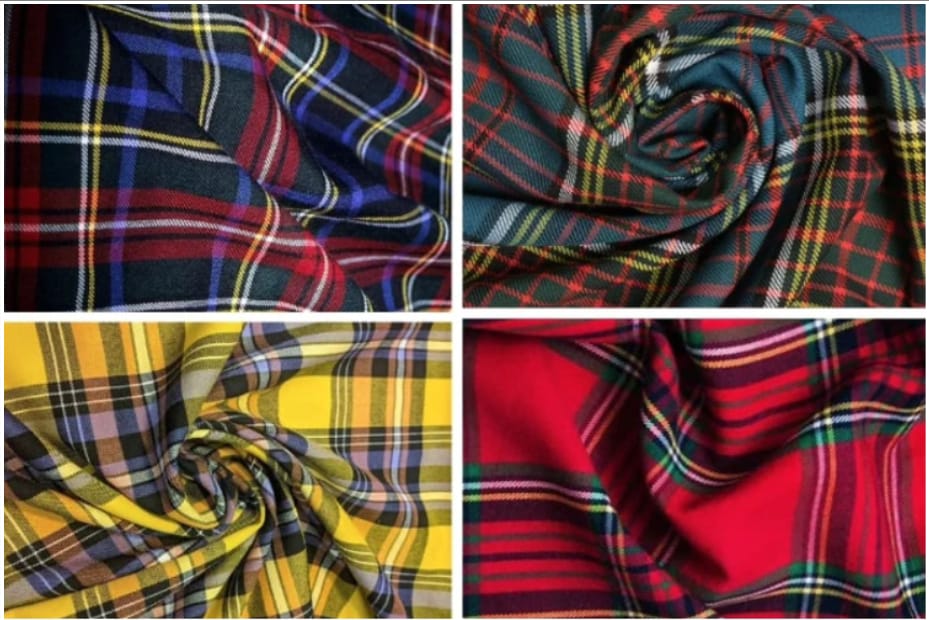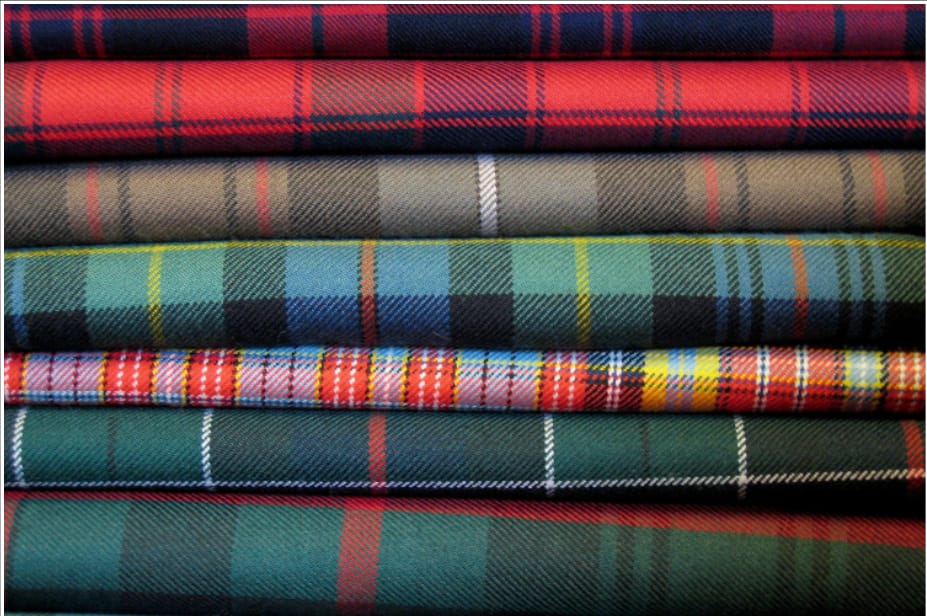What Makes Scottish Plaids Iconic?

Scottish plaids, also known as tartans, stand as timeless symbols of Scotland’s rich cultural heritage and identity. These iconic patterns, with their intricate designs and vibrant colors, have woven themselves into the fabric of Scottish history, reflecting centuries of tradition and innovation. From their ancient origins in the Scottish Highlands to their global recognition today, Scottish plaids evoke a sense of pride, belonging, and nostalgia among Scots and enthusiasts worldwide. In this article, we delve into the fascinating world of Scottish plaids, exploring their origins, symbolism, cultural impact, and enduring appeal. Join us on a journey through the rich tapestry of Scottish heritage as we uncover the stories woven into each tartan thread.

The Origin of Scottish Plaids
The history of Scottish plaids is a tapestry woven with threads of tradition, culture, and innovation. While the exact origins of tartan patterns in Scotland remain shrouded in the mists of time, archaeological evidence suggests that early inhabitants of the Scottish Highlands were skilled weavers who created fabrics with intricate designs. These ancient tartans, though rudimentary compared to modern plaids, laid the foundation for a tradition that would endure for centuries to come. Throughout the medieval period, Scottish plaids continued to evolve, reflecting changes in society, technology, and fashion. By the 16th century, tartan patterns had become associated with specific clans and regions, serving as visual markers of identity and allegiance. The weaving of tartan fabric became a highly specialized craft, with each clan developing its own distinctive patterns and color combinations. Tartan weaving became an integral part of Highland culture, with tartans worn as garments, used as blankets, and even displayed as symbols of clan pride.
Symbolism and Significance
At its core, the significance of Scottish plaids lies in their ability to encapsulate the essence of Scotland’s rich and diverse culture. Each tartan pattern tells a story, weaving together elements of history, geography, and identity into a visual tapestry that is uniquely Scottish. For members of Scottish clans, tartans serve as badges of honor, connecting them to their ancestors and their homeland. Whether worn as kilts, sashes, or scarves, tartans evoke a sense of pride and belonging that transcends time and place.
Cultural Impact
The cultural impact of Scottish plaids extends far beyond the borders of Scotland, influencing everything from fashion and design to literature and music. Tartan patterns have been embraced by designers and artists around the world, who draw inspiration from Scotland’s rugged landscapes and rich cultural heritage. In the world of fashion, tartan has become synonymous with luxury and sophistication, with designers incorporating tartan motifs into everything from haute couture gowns to streetwear collections. Tartan’s timeless appeal has also made it a popular choice for interior design, where it adds a touch of Scottish charm to homes and businesses alike.
Global Recognition
While Scottish plaids have their roots in Scotland’s Highlands and Islands, they have also gained worldwide recognition and popularity. Today, tartan patterns can be found on everything from clothing and accessories to home furnishings and consumer goods. Tartan’s international appeal can be attributed in part to Scotland’s diaspora, with Scottish immigrants taking their cultural traditions with them to countries around the world. In addition to its cultural significance, tartan has also become a symbol of Scottish tourism, with visitors to Scotland often purchasing tartan souvenirs as mementos of their trip.
The Process of Making Scottish Plaids
The process of making Scottish plaids is a labor-intensive craft that requires skill, precision, and attention to detail. Traditionally, tartans were woven by hand on looms using natural fibers such as wool, which were dyed using locally sourced plants and minerals. Each tartan pattern was carefully designed and executed, with weavers often working from memory or following intricate pattern charts. Once woven, the fabric was washed, pressed, and inspected to ensure quality before being cut and tailored into garments or other items.
Variety and Diversity
One of the most remarkable aspects of Scottish plaids is the incredible variety and diversity of designs available. From the bold, vibrant patterns of the Royal Stewart tartan to the understated elegance of the Dress Gordon, there is a tartan to suit every taste and occasion. In addition to clan tartans, there are also district tartans, military tartans, and even corporate tartans, each with its own unique history and significance. This diversity reflects the richness and complexity of Scottish culture, with tartan patterns serving as a visual representation of Scotland’s diverse heritage and traditions.
Iconic Designs and Patterns
Some tartans have achieved iconic status, gaining recognition far beyond the borders of Scotland. One of the most famous tartans is the Royal Stewart tartan, which is closely associated with the British royal family and is often worn on ceremonial occasions. Another iconic design is the Black Watch tartan, which takes its name from the elite Scottish military regiment of the same name. Other notable tartans include the MacLeod, the Cameron, and the MacGregor, each of which has its own unique story and symbolism.
Preservation Efforts
Recognizing the importance of preserving tartan traditions, various organizations and initiatives have been established to safeguard Scottish plaids for future generations. These efforts include the establishment of tartan archives and museums, which document the history and significance of tartan patterns and provide resources for researchers and enthusiasts. In addition to archival efforts, there are also programs to support traditional tartan weavers and promote the use of authentic Scottish plaids in fashion and design. By raising awareness of tartan heritage and supporting the artisans who keep these traditions alive, these efforts aim to ensure that Scottish plaids continue to thrive for generations to come.
The Role of Scottish Plaids Today
In contemporary society, Scottish plaids continue to play a prominent role in both fashion and culture. Tartan patterns are regularly featured in fashion collections by top designers, who draw inspiration from Scotland’s rich cultural heritage. Tartan’s association with Scottish identity also makes it a popular choice for weddings, formal events, and celebrations, where it is often worn as a symbol of pride and tradition. In addition to its fashion appeal, tartan is also used in interior design, where it adds a touch of Scottish charm and character to homes and businesses.

Discover Scottish Treasures at the Scotland shop
If you’re seeking authentic Scottish plaids and traditional merchandise, look no further than the Scotland shop. Nestled in the heart of Scotland’s bustling cities and quaint villages, these shops offer a treasure trove of tartans, kilts, and souvenirs that celebrate the country’s rich cultural heritage. From intricately woven tartan scarves and cozy wool blankets to handcrafted Celtic jewelry and bagpipes, the Scotland shop is a haven for those eager to embrace Scotland’s traditions and craftsmanship. Whether you’re a visitor looking for a memento of your Scottish adventure or a local seeking to reconnect with your heritage, the Scotland shop provides an authentic and immersive shopping experience that captures the spirit of Scotland.
Challenges and Controversies
Despite their enduring popularity, Scottish plaids have faced challenges and controversies in recent years. One of the main issues is the misappropriation of tartans by fashion designers and retailers who use Scottish-inspired designs without proper attribution or respect for their cultural significance. This has led to calls for greater awareness and respect for tartan heritage, as well as efforts to protect traditional tartan patterns through legal means. Another challenge is the threat posed by counterfeit tartans, which are often produced using inferior materials and methods, undermining the integrity of authentic Scottish plaids.
Future Outlook
As we look to the future, the sustainability of tartan production is a growing concern. With increasing awareness of environmental issues and ethical sourcing practices, there is a growing demand for tartans that are produced using sustainable materials and methods. This has led to the development of eco-friendly tartans made from organic wool and natural dyes, as well as initiatives to promote fair trade practices and support local artisans. Despite these challenges, the timeless appeal of Scottish plaids ensures that they will continue to inspire and captivate people around the world for generations to come.
Conclusion
In conclusion, Scottish plaids are more than just patterns; they are symbols of Scotland’s rich cultural heritage and identity. From their ancient origins to their modern-day significance, tartans embody the traditions, values, and spirit of the Scottish people. As we celebrate the legacy of Scottish plaids, let us also recognize the importance of preserving and protecting this invaluable cultural treasure for future generations to cherish and enjoy.
FAQs
- Are all Scottish plaids associated with specific clans?
While many tartans are linked to particular clans, there are also universal designs that anyone can wear.
- What is the significance of the colors in Scottish plaids?
The colors in tartan patterns often represent elements of nature, such as the green of the hills or the blue of the sky.
- Can I create my own Scottish tartan?
Yes, there are guidelines for designing custom tartans, and many people create their own to commemorate special occasions or family histories.
- Do Scottish plaids have any ceremonial significance?
Yes, tartans are often worn at formal events, such as weddings, ceilidhs, and Highland games, to honor Scottish tradition.
- How can I tell which tartan belongs to my family?
There are resources available, such as tartan databases and genealogical records, to help you discover if your family has a specific tartan.



